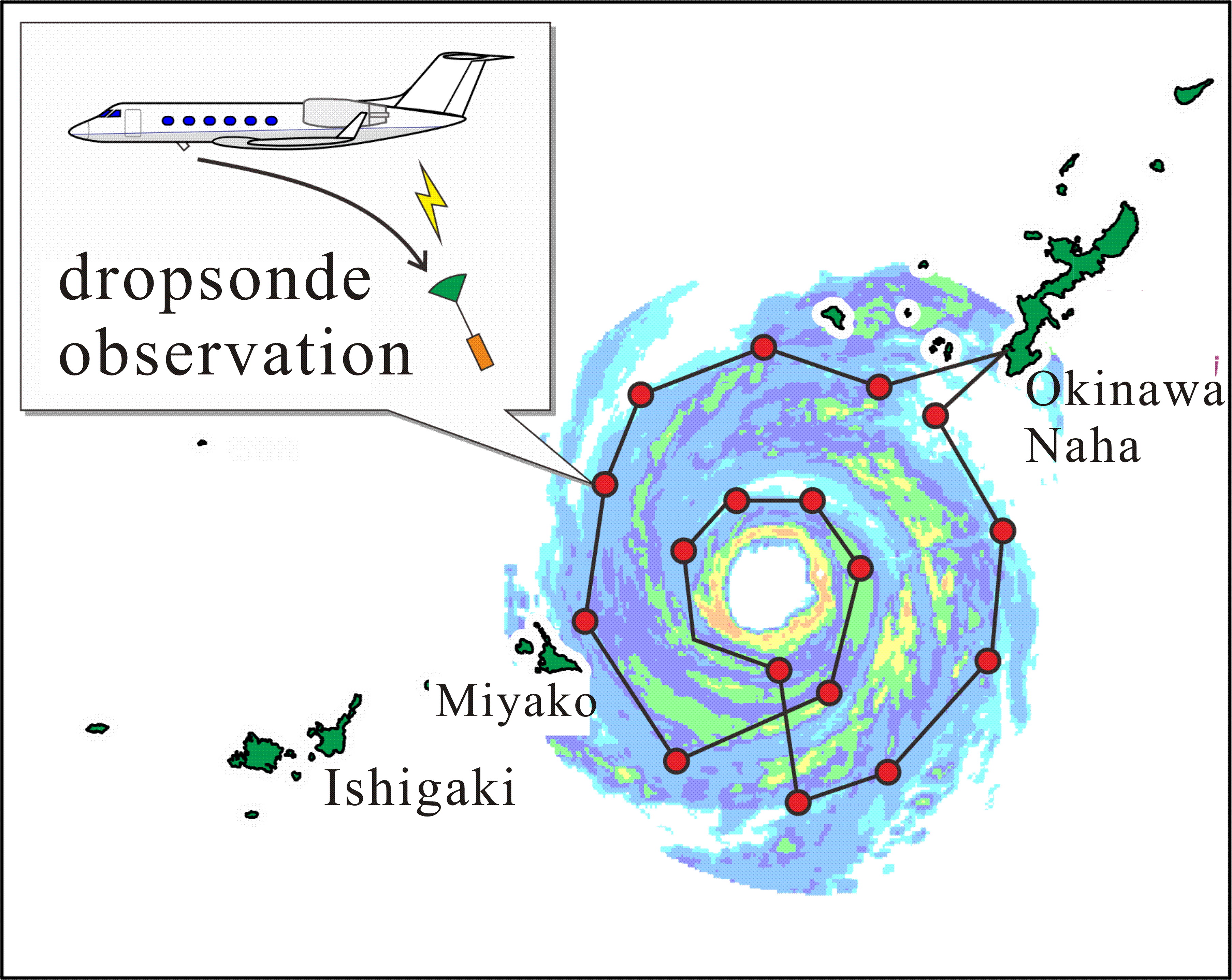As shown in Fig. 1, we will perform aircraft observations of typhoons. Using dropsondes from the aircraft, temperature, humidity, pressure, and wind are measured in the surrounding region of the typhoon center. The dropsonde data are assimilated to the numerical cloud-resolving model which has been developed in Nagoya University and we make efforts to realize accurate estimations and forecasts of the typhoon intensity as well as typhoon track. Furthermore, we will utilize a ground-based balloon with microscope camera, X-band precipitation radar, Ka-band cloud radar, aerosol sonde, and drone to observed typhoon and associated clouds and precipitation. After the test flight in 2016, typhoon observations will be made for the next 4 years; 2017-2020. The main target area of observation is the south of Okinawa where a typhoon turns.
|
